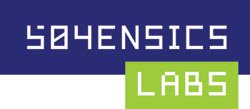Forensic discovery auditing of digital evidence containers
Full Text
Forensic discovery auditing of digital evidence containers, Journal of Digital Investigation 2007
Abstract
Current digital forensics methods capture, preserve, and analyze digital evidence in generalpurpose electronic containers (typically, plain files)with no dedicated support to help establish that the evidence has been properly handled. Auditing of a digital investigation, from identification and seizure of evidence through duplication and investigation is, essentially, ad hoc, recorded in separate log files or in an investigator’s case notebook. Auditing performed in this fashion is bound to be incomplete, because different tools provide widely disparate amounts of auditing information – including none at all – and there is ample room for human error. The latter is a particularly pressing concern given the fast growth of the size of forensic targets.
Recently, there has been a serious community effort to develop an open standard for specialized digital evidence containers (DECs). A DEC differs from a general purpose container in that, in addition to the actual evidence, it bundles arbitrary metadata associated with it, such as logs and notes, and provides the basic means to detect evidence-tampering through digital signatures. Current approaches consist of defining a container format and providing a specialized library that can be used to manipulate it. While a big step in the right direction, this approach has some non-trivial shortcomings – it requires the retooling of existing forensic software and, thereby, limits the number of tools available to the investigator. More importantly, however, it does not provide a complete solution since it only records snapshots of the state of the DEC without being able to provide a trusted log of all data operationsactually performed on the evidence. Without a trusted log the question of whether a tool worked exactly as advertised cannot be answered with certainty, which opens the door to challenges (both legitimate and frivolous) of the results.
In this paper, we propose a complementary mechanism, called the Forensic Discovery Auditing Module (FDAM ), aimed at closing this loophole in the discovery process. FDAM can be thought of as a ‘clean-room’ environment for the manipulation of digital evidence, where evidence from containers is placed for controlled manipulation. It functions as an operating system component, which monitors and logs all access to the evidence and enforces policy restrictions. This allows the immediate, safe, and verifiable use of any tool deemed necessary by the examiner. In addition, the module can provide transparent support for multiple DEC formats, thereby greatly simplifying the adoption of open standards.
